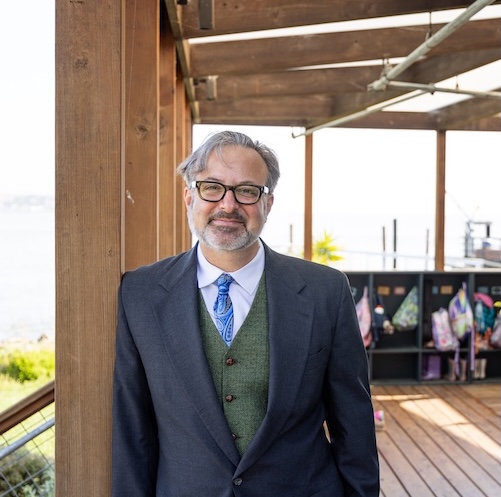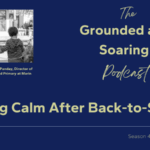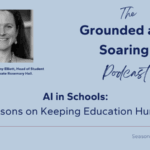A few summers back, my younger sister and I took a beach walk. Even though we live only a few hours away from each other, we’d not seen each other in person in more than a year. During the walk she said, “…it just feels like the world is spinning off of its axis.”
Can’t we all relate?
Part of me wondered whether every generation since time immemorial has felt this too. Imagining what our great grandparents, grandparents, and parents lived through, hadn’t they thought the same thing as they read and lived through the news of their times?
Perhaps. But I do know that there are some challenges that are certainly unique to our times.
The Crisis We All Face
Whether or not this moment is truly unprecedented, current research does reveal profoundly concerning trends of our specific times: In a recent edition of the Journal of Adolescence, researchers share that across the globe, youth loneliness is skyrocketing–and this research was conducted before the pandemic forced further isolation.
In the abstract, the authors note that “The survey included a six-item measure of loneliness at school in 2000, 2003, 2012, 2015 and 2018. Before 2012, the trends had stayed relatively flat. But between 2012 and 2018, nearly twice as many teens displayed high elevated levels of ‘school loneliness,’ an established predictor of depression and mental health issues.”
The mental health crisis facing our youth is well known and well publicized (i.e. major depression rates among youths aged 12 to 17 rose by almost 63 percent between 2013 and 2016), and our adult citizens are experiencing similar trends: American suicide rates increased by 33 percent between 1999 and 2019. According to the Survey Center on American Life, since 1990, the percentage of Americans who say they have no close friends has quadrupled.
With a 2018 Cigna study concluding that loneliness is indeed at epidemic levels in the United States, we know it is particularly acute among our youth. Generation Z–those between 18 and 22 when surveyed–had the highest loneliness scores. Additionally, among heavy social media users, 73 percent of those heavy users are lonely compared with 52 percent of light social media users. Connected to this, the author’s of the Journal of Adolescence study note that “In multilevel modeling analyses, school loneliness was high when smartphone access and internet use were high.”
None of us are immune. Now with 60 percent of Americans lonely, we must pay attention and take action. Loneliness is not only deleterious to our mental and emotional health; it also damages our physical health and actually makes our lives shorter.
The Good News
As a trained medical doctor and anthropologist, Dr. Montessori understood that humans are social animals. We absolutely need in-person human connection. At MMS, our children and adolescents are known and valued as individuals. They learn each day in a vibrant network of rich social connections. Joy and productive collaboration exist side by side with group conflicts and social and community challenges.
Such is the messiness of real human relationships, and these are addressed head on with coaching from the adults. Here, conflict resolution is taught and guided. In fact, every week our junior high students and faculty gather together at Community Council to discuss strengths and challenges in the community, to strategize resolutions, and to share appreciation with each other. (And, it’s worth noting, students are not permitted to use smartphones on campus at the Junior High).
The other good news: MMS offers a vibrant, caring parent community to connect with for all of our families.
How We Need to Stretch
All that said, the forced isolation we’ve been existing in throughout the pandemic risks becoming a habit. Much is written about pandemic social anxiety and awkwardness and strategies for working through this. And work through it we must. Our health and our children’s and adolescents’ well-being depends on our ability to create and sustain human connections and to support them in building their own.
To that end, I recommend that parents of young children and adolescents ensure their schools:
- Prioritize and value human connections. Consider the World Health Organization’s definition of health as “… a state of complete physical, mental and social well-being and not merely the absence of disease or infirmity.”
- Actively help children and adolescents build and sustain friendships. Following school and public health guidelines and requirements, let’s support our children and teens in taking part in group experiences like drama productions, team sports, group outdoor adventure, and unstructured social experiences. Let’s model this as well by safely creating and sustaining our own friendships and social connections too.
- Promote conflict resolution. When our children and teens experience social conflicts, let’s encourage and coach them in leaning into these instead of withdrawing. Let’s promote direct communication and relational repair and restoration of friendships.
- Limit or do not introduce digital devices. These are engineered to be so neurologically compelling that the devices soon become the go to choice for our children and adolescents when they have any downtime.
- Limit or do not introduce social media. If/when our children and teens do use digital devices and social media, let’s educate ourselves about how to most helpfully manage this use.
The Joy that Awaits
A child’s school can be both a refuge from and a preparation for this new world. As adults, we can use these precious years to provide the tools and environment for human connection and empathy. After all, our children’s futures are built on the foundations we provide for them today.

As Head of School, Sam is responsible for ensuring that Marin Montessori flourishes and that the School’s mission is brought to life each and every day.





